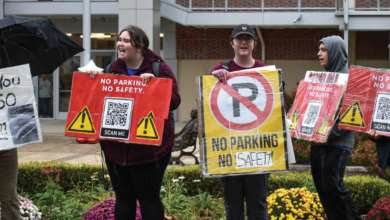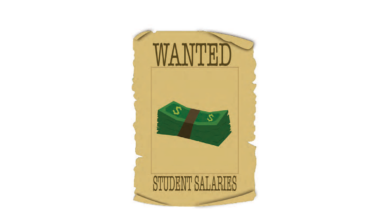One month later: How Rider has changed since mask mandate removal
By Shaun Chornobroff
When walking into any building of Rider’s campus on March 5, whether it be the Student Recreation Center, the gym or the campus bookstore, there was something largely missing that had become a mainstay on campus since the COVID-19 pandemic first broke out in the country almost two years before.
The missing item? Face masks.
March 5 was the day Rider’s repeal of the campus-wide mask mandate went into full effect, meaning students and faculty were no longer required to wear a face- covering when inside buildings on campus.
Rider’s Vice President for Strategic Initiatives and Planning and Secretary to the Board Debbie Stasolla, who serves as one of the leaders of COVID-19 implementation team said, “I have not heard much in the way of pushback. Honestly from what I can tell, the majority of the community is happy to have that choice [to wear masks].”
In the month since the mask mandate was repealed, Rider has seen 16 positive cases, as of April 1, according to the university dashboard that is updated every Friday.
The dashboard only displayed two positive COVID-19 cases in the first three weeks following the mask mandate being repealed, although one of those weeks was the spring break.
Anthony Corbi, a junior sports media major at Rider, tried to organize a protest against the mask mandate at the beginning of the school year.
Corbi said he felt relief when finding out the mask mandate was lifted at the university.
“Just from a sort of mental health standpoint, that definitely makes things a lot easier,” Corbi said. “… It’s really difficult to engage with people when everyone’s wearing a mask. I’ve found that oftentimes when there is a mask mandate and I’m indoors with someone or a group of people, I often don’t feel like I’m completely there because people can’t read my facial expressions, or people misunderstand what I say because they can’t properly hear me because of the mask.”
Over the past month, Corbi has noticed a stark difference in the atmosphere of his classes.
“I think [classes] have definitely become more interactive. It’s easier to hear people, it’s easier to give a presentation about something, whereas before it was standing up in the classroom with a mask on, it almost felt like people that would hide behind their cue cards when they were giving a presentation in high school,” Corbi said.
From March 26 to April 1, the week after students and faculty returned from the spring break, the dashboard displayed 14 positive cases; 10 from students and four from faculty, bringing the spring semester total to 76 cases.
Stasolla explained the cases the university has been dealing with are relatively mild and attributes the rise to the new variant continuing to spread its way around the state.
“I expect that number to be about that much, give or take for this week as well,” Stassola said.
The slight uptick in cases at the university coincides with a rise in New Jersey and Mercer County, where Rider is located. The Center for Disease Control and Prevention lists Mercer County as low community level of COVID-19 on its website, as of April 5.
Despite the fact Stasolla is not overly worried about the rise in cases, she did stress the university community needs to continue being concious in terms of the virus and its spread, as well as follow the implementation team’s guidelines.
Stasolla said, “I believe strongly if we continue doing those kinds of things as responsible members of the university community, then I believe we can get through the rest of this semester quite successfully, with the least disruption possible.”


